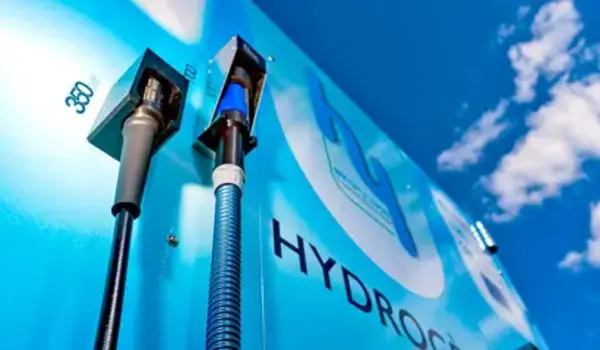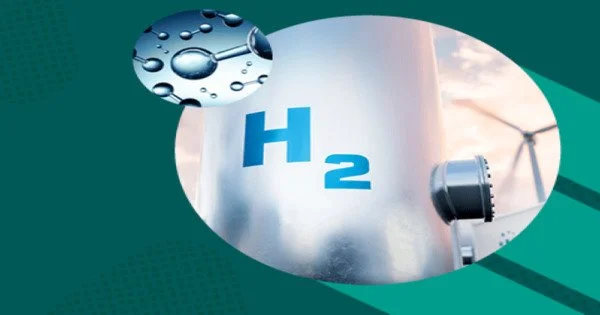Hydrogen fuel is often touted as a cleaner alternative to fossil fuels, as it produces only water when burned. However, most of the hydrogen produced today is made from natural gas through a process called steam methane reforming, which results in the release of carbon dioxide and methane emissions. Methane is a potent greenhouse gas, with a global warming potential that is many times greater than carbon dioxide over a 20-year time frame. So, if the hydrogen is produced from natural gas using steam methane reforming, it can actually lead to increased methane emissions.
Hydrogen is frequently heralded as the clean fuel of the future, but new research suggests that leaky hydrogen infrastructure may end up increasing atmospheric methane levels, causing long-term climate consequences. According to research from Princeton University and the National Oceanic and Atmospheric Association, the potential of hydrogen as a clean fuel may be limited by a chemical reaction in the lower atmosphere.
This is due to the ease with which hydrogen gas reacts in the atmosphere with the same molecule that is primarily responsible for breaking down methane, a potent greenhouse gas. If hydrogen emissions exceed a certain threshold, the shared reaction will almost certainly result in methane accumulation in the atmosphere, with long-term climate consequences.
“Hydrogen is theoretically the fuel of the future,” said Matteo Bertagni, a postdoctoral researcher at the High Meadows Environmental Institute working on the Carbon Mitigation Initiative. “In practice, though, it poses many environmental and technological concerns that still need to be addressed.”
Managing leakage rates of hydrogen and methane will be critical. If you have just a small amount of methane leakage and a bit of hydrogen leakage, then the blue hydrogen that you produce really might not be much better than using fossil fuels, at least for the next 20 to 30 years.
Matteo Bertagni
Bertagni is the first author of a study published in Nature Communications that modeled the impact of hydrogen emissions on atmospheric methane. They discovered that, above a certain threshold, a leaky hydrogen economy could cause near-term environmental harm by increasing the amount of methane in the atmosphere, even when replacing fossil fuel usage. The danger is heightened for hydrogen production methods that use methane as an input, emphasizing the critical need to manage and reduce emissions from hydrogen production.
“We have a lot to learn about the consequences of using hydrogen, so the switch to hydrogen, a seemingly clean fuel, doesn’t create new environmental challenges,” said Amilcare Porporato, Thomas J. Wu ’94 Professor of Civil and Environmental Engineering and the High Meadows Environmental Institute. Porporato is a principal investigator and member of the Leadership Team for the Carbon Mitigation Initiative and is also associated with faculty at the Andlinger Center for Energy and the Environment.
The problem boils down to one small, difficult-to-measure molecule known as the hydroxyl radical (OH). Often dubbed “the detergent of the troposphere,” OH plays a critical role in eliminating greenhouse gases such as methane and ozone from the atmosphere.

In addition, the hydroxyl radical reacts with hydrogen gas in the atmosphere. And, because OH is produced in limited quantities each day, any increase in hydrogen emissions means that more OH is used to break down hydrogen, leaving less OH available to break down methane. As a result, methane would stay in the atmosphere for longer, extending its warming effects.
Bertagni believes that the effects of a hydrogen spike, which could occur as government incentives for hydrogen production expand, could have long-term climate consequences for the planet.
“If you emit some hydrogen into the atmosphere now, it will lead to a gradual buildup of methane over the next few years,” Bertagni explained. “Even though hydrogen has a two-year lifetime in the atmosphere, you’ll still have methane feedback from that hydrogen in 30 years.”
The researchers identified a tipping point in the study at which hydrogen emissions would cause an increase in atmospheric methane, undermining some of the near-term benefits of hydrogen as a clean fuel. The researchers established targets for managing hydrogen emissions by determining that threshold.
“It’s imperative that we are proactive in establishing thresholds for hydrogen emissions so that they can be used to inform the design and implementation of future hydrogen infrastructure,” said Porporato.
Bertagni stated that the critical threshold for hydrogen emissions is around 9% for green hydrogen, which is produced by splitting water into hydrogen and oxygen using renewable electricity. That means that if more than 9% of the green hydrogen produced leaks into the atmosphere – whether at the point of production, during transportation, or elsewhere along the value chain – atmospheric methane will rise over the next few decades, canceling out some of the climate benefits of moving away from fossil fuels.
The threshold for emissions is even lower for blue hydrogen, which is hydrogen produced through methane reforming with subsequent carbon capture and storage. Because methane is the primary input for the methane reforming process, blue hydrogen producers must account for direct methane leakage in addition to hydrogen leakage. The researchers discovered, for example, that even with a methane leakage rate as low as 0.5%, hydrogen leakages would have to be kept below 4.5% to avoid increasing atmospheric methane concentrations.
“Managing leakage rates of hydrogen and methane will be critical,” Bertagni said. “If you have just a small amount of methane leakage and a bit of hydrogen leakage, then the blue hydrogen that you produce really might not be much better than using fossil fuels, at least for the next 20 to 30 years.”
The researchers emphasized the significance of the time scale used to assess the effect of hydrogen on atmospheric methane. Bertagni stated that even if methane and hydrogen leakage levels are high enough to cause near-term warming, switching to a hydrogen economy would likely deliver net benefits to the climate in the long run (over a century, for example). He predicted that atmospheric gas concentrations would eventually reach a new equilibrium, and that the transition to a hydrogen economy would demonstrate its climate benefits. However, before that, the potential short-term consequences of hydrogen emissions could cause irreversible environmental and socioeconomic damage.
Bertagni cautioned that if institutions hope to meet mid-century climate goals, hydrogen and methane leakage to the atmosphere must be controlled as hydrogen infrastructure is deployed. And, because hydrogen is a small molecule that is notoriously difficult to control and measure, he explained that reducing emissions will almost certainly necessitate researchers developing better methods for tracking hydrogen losses throughout the value chain.
















